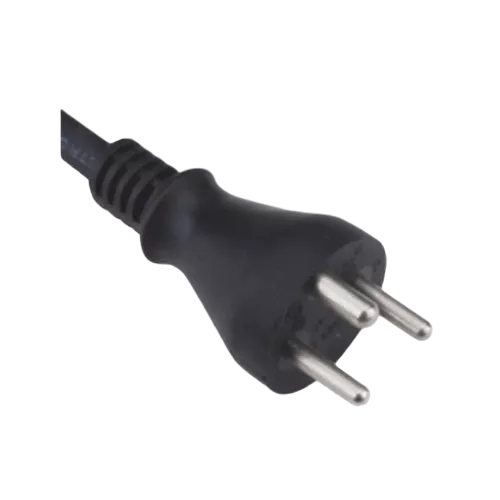Inspect for Damage: Regular and thorough inspection of the power cord is critical to maintaining electrical safety. Look for any visible signs of wear, including fraying, cuts, nicks, or exposed wires. Damaged insulation or connectors can expose live wires, posing immediate risks of electric shock or fire. Pay particular attention to areas near plugs and sockets where bending or twisting may have compromised the cord's integrity. Replace any damaged cords immediately with cords that meet the same specifications to avoid safety hazards and ensure reliable electrical connections.
Avoid Overloading: Overloading occurs when too many devices are connected to a single power outlet or power strip through the power cord, drawing more current than the cord or outlet can safely handle. This can lead to overheating and potential fire hazards. To prevent overloading, calculate the total power consumption of all connected devices and ensure it does not exceed the rating of the power cord or the outlet. Use power strips or outlets equipped with overload protection and avoid daisy-chaining multiple power strips together, as this can further increase the risk of overheating and electrical faults.
Proper Storage: Proper storage of power cords is crucial to prevent physical damage and ensure their longevity. Avoid tightly coiling or twisting cords, as this can cause kinks, bends, or damage to the internal wires over time. Instead, loosely coil the cord and secure it with twist ties or Velcro straps to prevent tangling. Store cords in a cool, dry place away from direct sunlight and sources of heat to protect the insulation from degradation. Ensure cords are stored where they won't be crushed, pinched, or subject to excessive wear, particularly at the ends where connections are made.
Keep Dry: Water and electricity are a dangerous combination, so it's essential to keep power cords away from water sources, wet surfaces, or damp environments. Moisture can compromise the insulation of the cord, increasing the risk of electrical shorts, shocks, or equipment damage. Use waterproof covers or enclosures for outdoor applications where exposure to moisture is unavoidable. Regularly inspect cords used in damp environments for signs of water ingress or corrosion, and replace them immediately if any damage is detected to maintain safe electrical operation.
Unplug Correctly: When disconnecting the power cord from an outlet, always grasp the plug itself rather than pulling on the cord. Pulling on the cord can strain the internal connections, potentially causing wire breakage, short circuits, or damage to the plug or socket over time. By gripping the plug firmly and pulling straight out from the outlet, you ensure a secure disconnection without putting unnecessary stress on the cord or risking electrical hazards. This practice helps maintain the integrity of the cord and ensures safe and reliable operation during plug and unplug cycles.
Avoid Sharp Bends: Sharp bends or twists in a power cord can cause stress on the internal wires, leading to insulation damage, wire breakage, or short circuits. Route power cords in a way that minimizes bending and strain, particularly near plugs or connectors where repeated flexing can weaken the cord over time. Use cord organizers or cable management solutions to maintain gentle curves and prevent sharp bends that could compromise the cord's structural integrity. By ensuring cords are properly routed and secured, you reduce the risk of electrical faults and prolong the operational life of the power cord.
D3-16 South African/Danish standard power cord



 English
English عربى
عربى











